- 05
- May
The flamenco dress in the Spring festivals of Andalusia
The flamenco dress plays a most significant role in the Southern Spanish Spring fairs, locally known as “ferias”. The powerful presence of the flamenco dress at these festivities makes them spectacular celebrations of the incredible lifestyle and exuberance that Southern Spain has to offer.
Feria is a 4 to 7 day explosion of joy and colour, taking place in different towns and cities throughout Andalusia from April until August. Feria is all about “letting your hair down”; creating an opportunity for everybody to experience and share freedom and fun.
For women this annual event has especially become iconic, because they are the ones who steal the show. It’s during the feria when they wear their gorgeous flamenco dresses, known in Spanish as “trajes de gitana” (gipsy dress) or “trajes de flamenca”. Adorned in these beautiful flamenco dresses and accessories, women become their most beautiful.
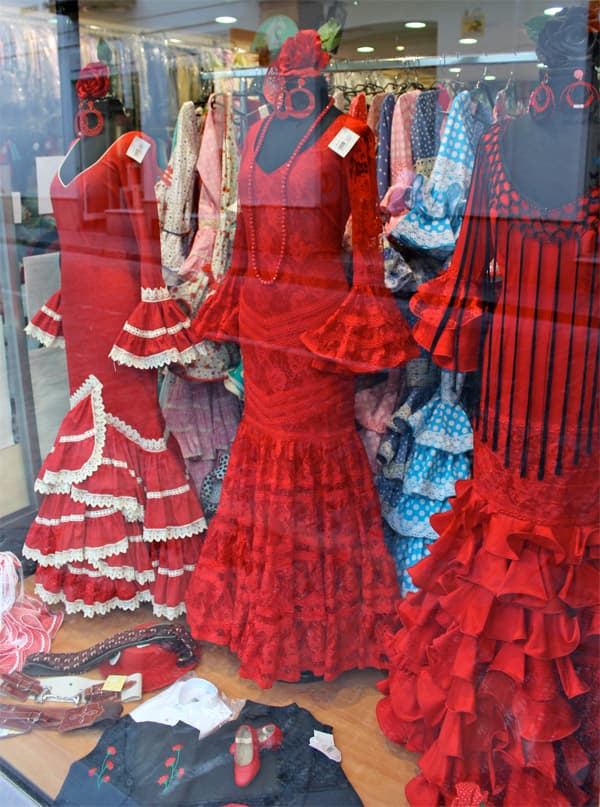
Flamenco dresses in a shop in Jerez
“After the wedding dress, the flamenco dress is the most beautiful costume a woman can wear. Besides, the flamenco dress is the costume with which women have most fun” said Charo Fernández, a professional tailor from el Puerto de Santa María.
The Flamenco Dress is a powerful extension of women’s right of both self expression and divine femininity and at the Feria there is no hierarchy: all women are queens. Equally respected, adored and worshipped all day long.
It’s as if women got a magic injection of elegance, beauty and cheerfulness when they get into their flamenco dresses.
“Sure! We gain a lot of power in our flamenco dresses, and that’s because we know we look beautiful in them”, said Lucía, a shop attendant at the Jerez fabric store Telas el Metro.
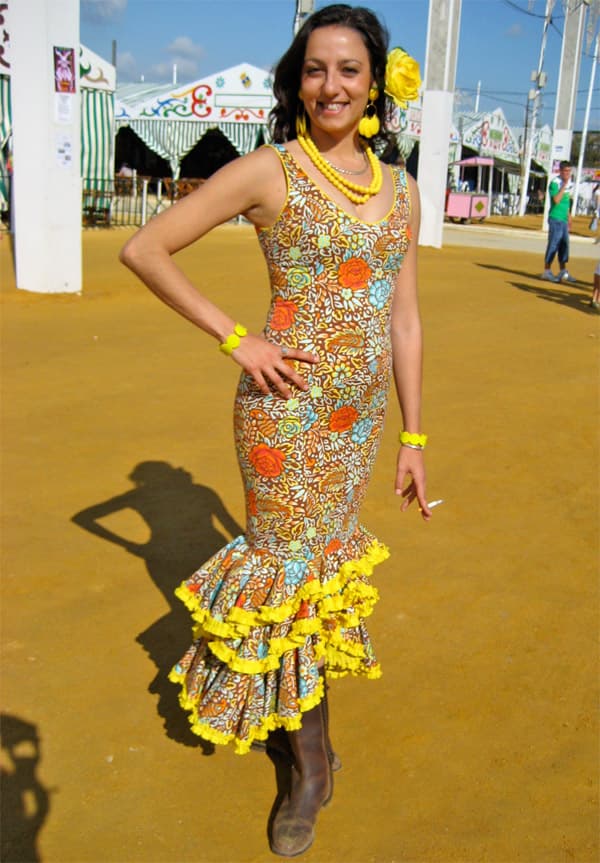
Silvia González looking guapísima in El Puerto de Santa María
Now, have you ever wondered who’s actually behind the making of a flamenco dress? Who’s responsible for stitching into the fabric that secret power Lucia talks about?
Even though there are professional tailors from whom some people buy their flamenco dresses, the many number of women here in Andalusia love nothing more than getting creative with the sewing machine. With years of experience often passed down through generations, they combine all their skills and expertise to make their very own custom-made flamenco dresses.

Charo Fernández’s sewing machine
DIY has always been a very common approach to custom clothing in Andalusia, so fabric shops and haberdasheries are numerous in Andalusian towns and cities. They are busy places where people start to talk about the feria earlier than anywhere else.
“The first meters of fabric for flamenco dresses for the feria sell in January” said Herminia, who works with Lucia at Telas el Metro in Jerez.
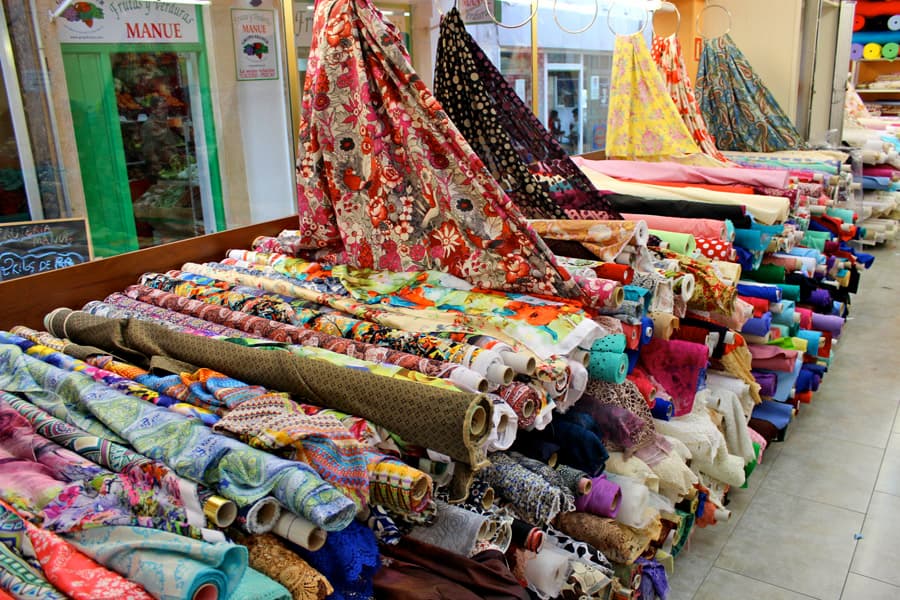
Fabric designs at Telas el Metro in Jerez
They experience the busiest time of the year in Spring. Thousands of meters of plain fabric are sold first for the tunics and hoods of Easter processions members. Then it’s time for the colourful patterns with polka dots and flowers to be chosen for the making of flamenco dresses.
Choosing the perfect fabric for your dress isn’t an easy process considering the hundreds of different fabric patterns and designs available.
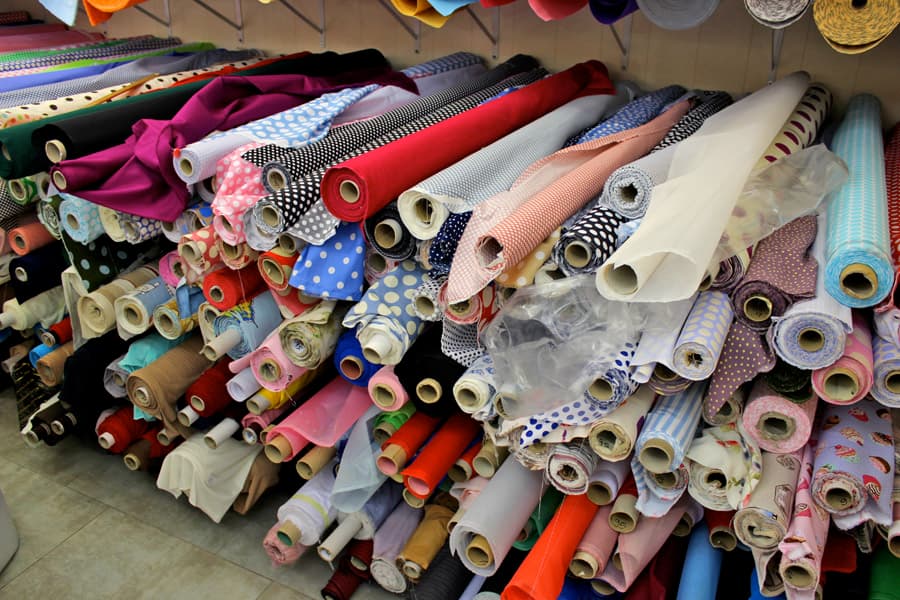
More fabric designs at Telas el Metro in Jerez
Once people have decided on their fabric, often a meticulous task, they go the next key “DIY” shop: the haberdashery.
If you thought choosing a fabric of your liking was difficult enough , then just await for the indecisions and choices that arise when people step into a haberdashery in Andalusia. With the endless varieties of tassels, laces, ribbons and other infinite add-ons to customize a flamenco dress, it’s easy to become overwhelmed.

Add-ons for flamenco dresses in Cervera (a haberdashery in Jerez)
Though not having a clear idea can also be fun. The shop attendants have tons of patience and sense of humour. Some of them are a real laugh, like Antonio, who works in a haberdashery called Cervera in Jerez. He talks out loud to the clients and to himself while he comes and goes to the store rooms to fetch what he guesses people mean when they speak to him about their ideas.
With all the necessary materials, advice and extra inspiration acquired in these shops, women then start the making of their flamenco dresses in workshops or in their homes. During the process, these spaces turn into real factories of one of the most dynamic traditions in Andalusia.

Charo and Toñi Fernández working on a baby flamenco dress
“The trends in flamenco dresses change. That’s one of the reasons why women like to have a new dress every year. The designs one can see these days would have been unthinkable some years ago. People like to innovate and create new models. Some women buy new fabrics and add-ons every year. However, there’s also a great deal of old dresses being transformed for each year’s feria”, said Toñi Fernández, who sew professionally for many years in El Puerto de Santa María.
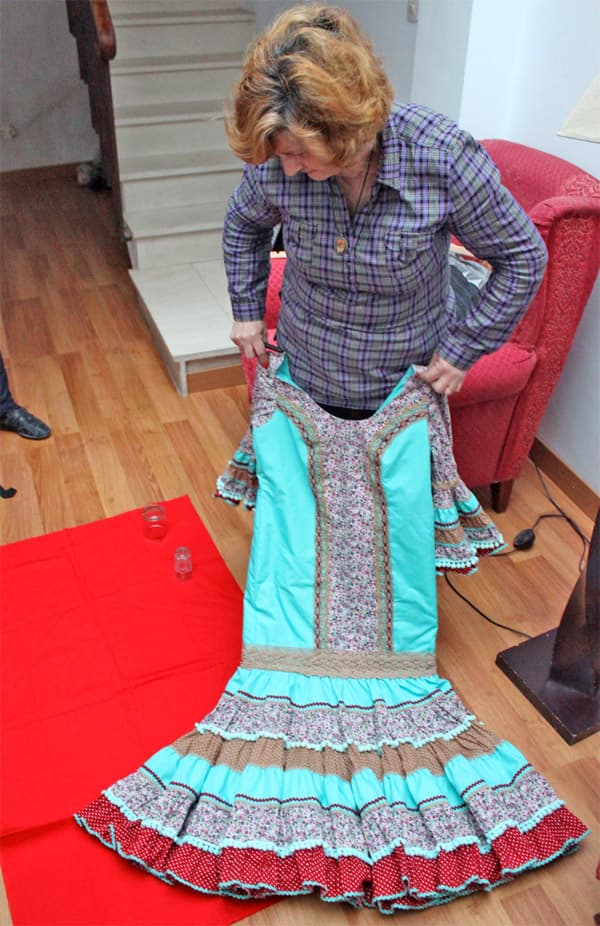
Toñi Fernández showing one of her creations
The finishing touches of a flamenco outfit are accessories or “abalorios” in Spanish.
Accessories are a must have and the most basic of sets must include large hooped earrings, a fan and a flower. Then, a shawl, a necklace and bracelets are optional. “Some people buy more than one set of accessories. They are an easily replaceable part of any flamenco outfit and they can make people look as if they were wearing a different dress. Besides, there’re some people who have different dresses for different days or different times of the day, so they need to have several sets” said Chari from Accesorios Colorido in Jerez.

Flamenco outfit accessories at Accessorios Coloridos in Jerez
Accessory shops are also great experiences. Full to the brim with varying options of the aforementioned ítems, the biggest surprise we had was when we asked Chari what colors people were choosing this year. After letting us know that red and white are always popular, she very naturally mentioned other colors such as “aguamarina” (aquamarine), “verde agua” (water green), “rosa palo” (a sort of light pink), bugainvillea or peacock blue…colours we never knew existed!
Case study: a mother who makes flamenco dresses for her daughter every year via skype
You’d think that making a tailor-made flamenco dress would involve the client and the tailor meeting several times throughout the process; measurements, fittings, modifications and general queries… Whilst this is true, with the advancement of technology nowadays it’s possible to make a tailor-made flamenco dress without ever meeting the client in person. This is how Charo Fernández manages to get her daughter’s flamenco dress made every year.
Cristina, who lives and works in Valencia, has her flamenco dresses made in El Puerto de Santa María without ever trying them on. The first time she tries them on is when she arrives in El Puerto for the start of the Feria each year and this is the result!
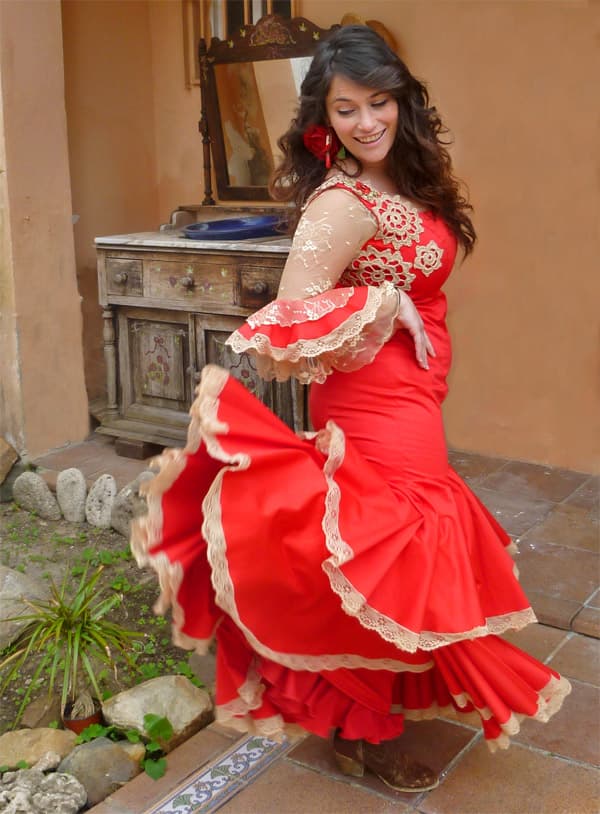
Cristina Miranda with her online tailor-made flamenco dress
Whilst Genuine Andalusia sadly doesn’t make custom-made Flamenco dresses (well at least not yet!) we are pleased to offer you our own tailor-made tours and vacations of Andalusia.


